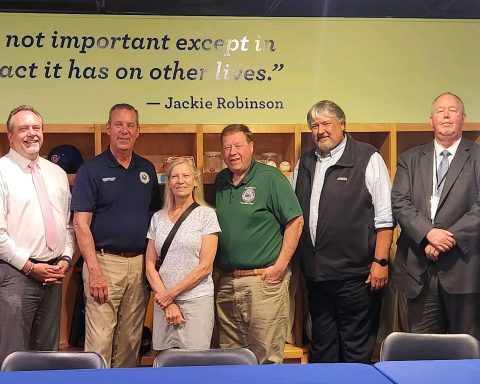The final Priority Project Slate includes the Small Projects Fund, six public improvement initiatives and five private development/rehabilitation projects. Representatives from project lead Laberge Group guided LPC members through a final overview of the proposals under consideration, following which those proposals were identified as either “priority projects” or “pipeline projects”—those with potential but not quite ready yet—to be considered later in accordance with the NY Forward guidelines.…
Ken Meifert
The agenda for this meeting will be to select projects to be recommended for funding. All LPC meetings are open to the public and allow time for public comment.…
The agenda for this meeting includes a summary of public engagement results to date and discussion of proposed projects.…
Assemblyman Chris Tague (R,C-Schoharie) welcomed Assemblyman Scott Gray (R-Watertown) and the Tourism Task Force to his vibrant district as part of the ongoing tourism tour.…
The Village of Cooperstown Local Planning Committee met on Tuesday, August 22 to review projects submitted following an open request for proposals associated with the village’s New York Forward grant. On March 2, the Village of Cooperstown was awarded a $4.5 million NY Forward grant, one of three Mohawk Valley winners of the first round of the new state grant program created to invigorate and enliven downtowns in New York’s smaller and rural communities.…
On August 11, the results of the Village of Cooperstown New York Forward Community Survey were released. The report, which can be found in its entirety on the village website, was prepared by Highland Planning. The online survey—intended to gauge community members’ perceptions of opportunities within the Village of Cooperstown in order to inform the $4.5 million funding investment by the NY Forward program—was hosted on Survey Monkey from June 19 to August 7 and received 162 responses.…
The Local Planning Committee for the Cooperstown New York Forward program will hold its third meeting on Wednesday, August 23 from 4:30-6:30 p.m. at the Cooperstown Village Hall, 22 Main Street. The meeting is open to observers from the public, with an opportunity for public comment.…
Village To Hold LPC Meeting Wednesday for NY Forward Strategic Investment Plan Names of Planning Committee Members Released COOPERSTOWN—The Village of Cooperstown was selected by the Mohawk Valley Regional Economic Development Council to receive a $4.5 million award from New York State through the NY Forward program. Investment from this program will allow Cooperstown to develop a Strategic Investment Plan and implement key catalytic projects to advance a community vision for downtown improvements. Projects selected for funding will transform the…
HALL OF FAME INDUCTION 2019 Crowds Growing On Main Street P.J. Carter, left, son of famed Expo and Met Gary Carter, gives his dad’s best wishes to Tommy Lasorda, famed two-decade manager of the L.A. Dodgers, who is signing autographs today on Main Street, Cooperstown. Behind Lasorda is another great, Lou Pinella, who finished up his 16-year playing career as a Yankee. Crowds are bigger than usual for a first day of Induction Weekend, said Vinnie Russo, proprietor of Mickey’s…
Cooperstown Chamber Applauds Executive’s ‘Ugly Sweater’ Success…


